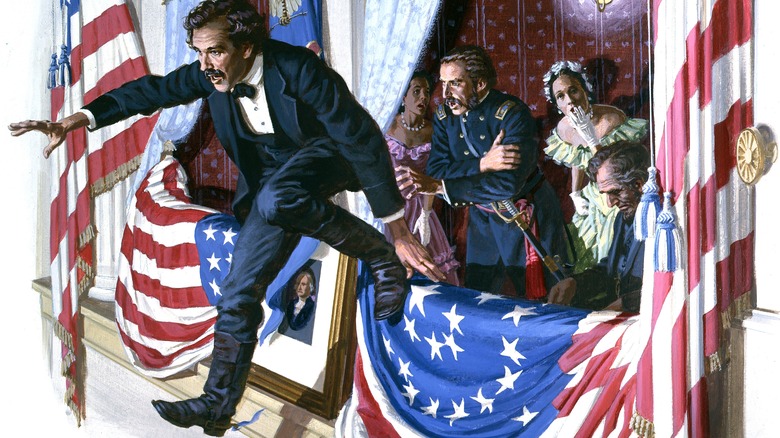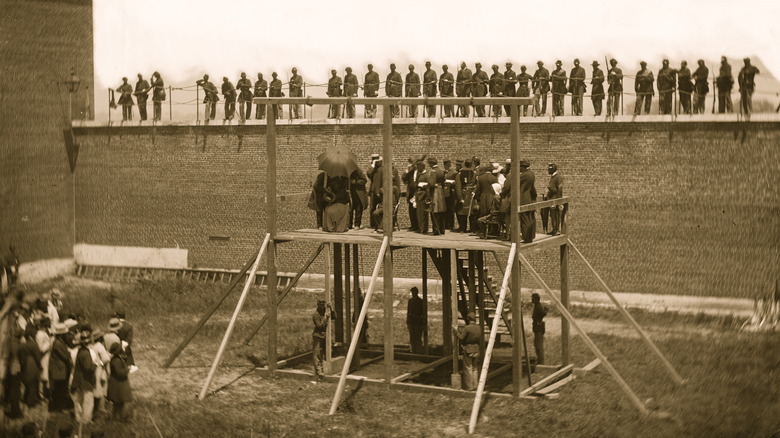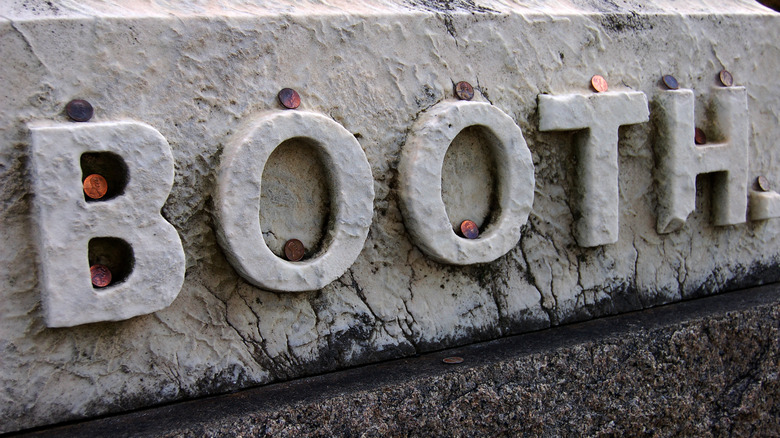What Happened To John Wilkes Booth's Body?
It's possibly the most consequential death of a president in the United States: The assassination of Abraham Lincoln, just as the Civil War concluded. Beyond the human tragedy of such a murder, Lincoln's death was a blow to the post-war Reconstruction era. The task of rebuilding the South and safeguarding the rights of newly freed enslaved people might have been beyond even Lincoln's political skills. But if he survived, Reconstruction would undeniably have been different — and almost certainly more successful. The failings of Reconstruction without Lincoln plagued the United States until well into the 20th century.
The man directly responsible for Lincoln's death and America's loss, John Wilkes Booth, comes and goes from many history books with his crime. But the conspiracy Booth was party to, an elaborate scheme that first intended to kidnap the president and kill him and his chief officers, could fill a book in itself. Booth was the only assassin of the group to kill his target, and he likely broke his leg as he fled Ford's Theatre. Over 1,000 men joined the manhunt for Booth, who was surprised when public opinion, even in the South, went against his deed. Even some of his co-conspirators turned on him, though not to the Union troops.
The hunters came upon Booth in a tobacco barn, where he refused to surrender and was shot after the barn was set on fire. He died hours later, ending his role in the history of the Civil War. But his body was the subject of a lengthy postscript, as it was buried three times, eventually finding final rest in Baltimore.
Booth was first buried in Washington's Old Penitentiary
John Wilkes Booth did not have a death wish, and he tried to escape into southern territory after assassinating Abraham Lincoln. But in the event escape proved impossible, he had no plans to face trial and execution. "I have too great a soul to die like a criminal," he wrote in his diary not long before the assassination (via Smithsonian Magazine). When he was finally cornered amid the manhunt, he refused to surrender and tried to challenge his 29 pursuers to an honorable duel. When he was refused, and the Union soldiers moved to set his hideout on fire, Booth refused to shoot them or himself. He fled from the barn, took a bullet to the neck, and was dead within a few hours.
Booth's co-conspirators faced less theatrical ends. All of them faced justice before the courts, and except for Confederate spy John Surratt, all were convicted at one time or another. Three of the conspirators would be pardoned by President Andrew Johnson in 1869, but four were executed by hanging in July 1865 at Washington D.C.'s Old Penitentiary. It was here that Booth was initially buried. In fact, he beat his comrades there. After his body was identified and autopsied, it was secretly buried on the penitentiary's grounds before the hangings. Booth and his co-conspirators were left there for two years before being exhumed and reburied in a penitentiary warehouse.
He was reburied in his family's plot
Secretary of Defense Edwin Stanton exercised firm control over images of John Wilkes Booth's dead body, determined as he was to deny Booth martyrdom. The secrecy, and the sensationalism of Booth's actions, inspired a rush of conspiracy theories. One claimed that Booth and his co-conspirators had hired an impersonator to be killed in his place, and that Booth had escaped and fled to Europe. But dead he was, and his body remained within the lands of Washington D.C.'s Old Penitentiary until 1869.
That year, President Andrew Johnson agreed to return Wilkes' body to his family. His mother took possession of it and brought him to Baltimore, where he'd grown up. The family had a plot in the city's Green Mount Cemetery. Considering the circumstances of his death, Booth's relatives felt it inappropriate to give him a marked headstone, let alone a massive obelisk like that which marks the grave of his father. The Booth plot has a small, unmarked grave, which is widely believed to belong to Booth. Visitors to Green Mount sometimes leave pennies, bearing Lincoln's likeness, on the grave or on Booth's father's stone.
It isn't known for certain, however, that Booth is in the unmarked grave — it might be the resting place of his sister. And the myth of Booth's escape has lingered on. Historians devoted to the idea, and members of the Booth family, have sought over the years to exhume his alleged remains for study and identification. One such push was denied in 2013.


